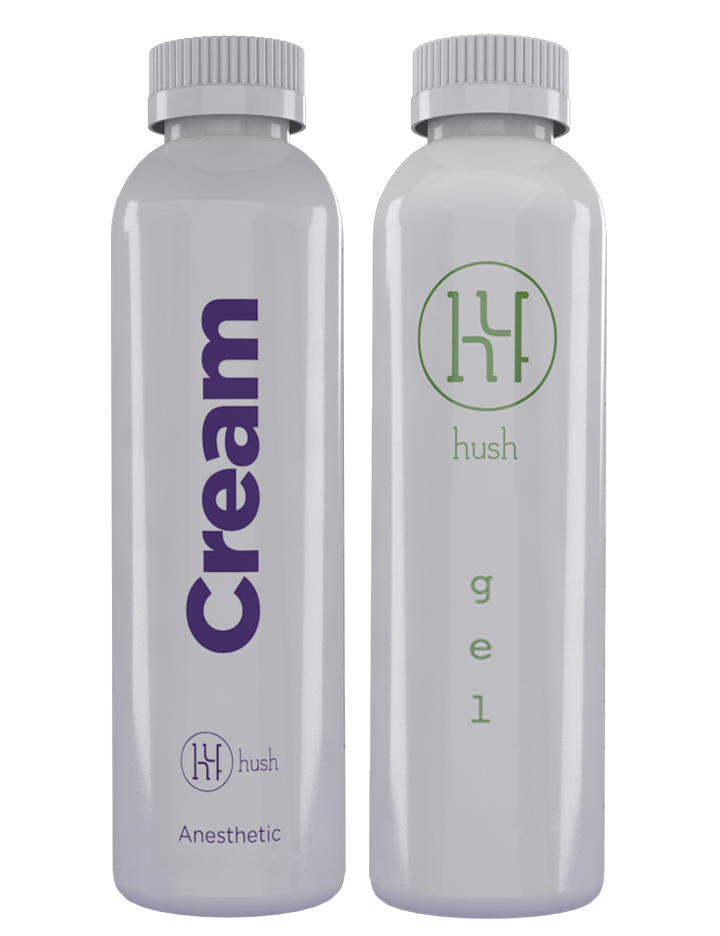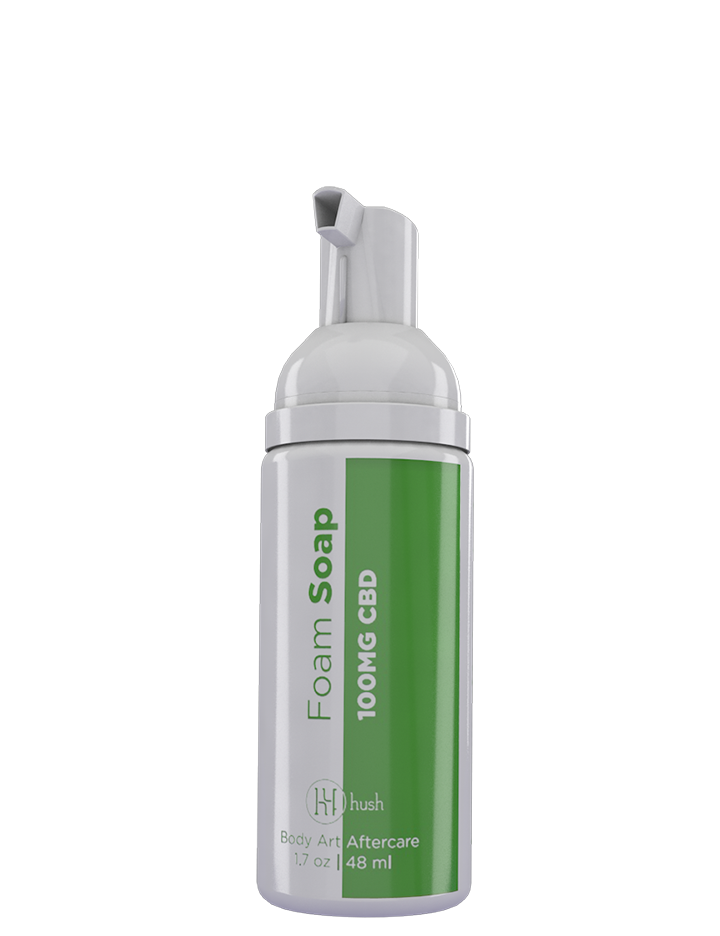When you’re thinking about getting a tattoo, you know there’s an element of discomfort to consider. Some people believe that the pain of a tattoo is an inevitable part of the tattoo process. Others expect some pain but are looking for ways to minimize their discomfort.
There are a few primary ways to reduce the pain associated with tattoos: to use a tattoo numbing product and to pick one of the least painful places to get a tattoo. To understand the least painful places to get a tattoo, you’ll want to understand the factors that can make getting a tattoo feel more or less painful.
These are some of the most important determinants of how painful a tattoo will be.
What Influences Tattoo Pain?
Tattoos hurt. That’s part of the deal. But while some people breeze through a five-hour session with a grin, others feel like they're being slowly roasted by a maniac with a vibrating needle. So what gives?
Tattoo pain is personal, but it’s also influenced by several key factors. If you're prepping for your next piece, understanding what contributes to tattoo pain can help you make smart choices and manage expectations.
Tattoo Placement
Where you get tattooed plays a massive role in how much it hurts. Some areas are rich in nerve endings or close to bone, making them much more sensitive. Others are padded with fat and muscle, which helps absorb the sensation.
High Pain Areas:
- Ribs: Very little fat or muscle here, just bone and nerve endings.
- Spine: Packed with nerves, with minimal cushioning.
- Elbows, Knees, Ankles: Bony joints are usually pretty painful.
- Neck, Face, Hands, Feet: High-sensitivity areas with thinner skin.
Lower Pain Areas:
- Outer upper arm: Dense and well-padded
- Thigh (especially outer thigh): A fleshy area with little potential for bone or nerve pain.
- Calves and buttocks: Very padded body parts with low movement.
If your heart is set on a particular placement, don’t let the idea of pain stop you. You can always prep with HUSH tattoo numbing cream before your session.
Your Individual Pain Threshold
Pain is subjective, and everyone’s threshold is different. Some people genuinely feel less discomfort than others due to their nervous system's response to stimuli.
-
Genetics: Some folks are just wired differently and don't feel pain as intensely.
-
Hormonal cycles: Estrogen and other hormone fluctuations can make pain feel worse or more manageable.
- Mental health: Anxiety and stress can ramp up your sensitivity. If you’re tense, your body is more likely to perceive pain as threatening.
Some of these issues can become a "mind over matter" situation. If you do your deep breathing exercises and chill before your tattoo session, you're less likely to feel anxious about the process.
Tattoo Style and Technique
Techniques shape your experience. Some tattoo techniques require a light touch and minimal trauma to the skin. Others demand deep shading, multiple passes, or extensive linework, all of which increase discomfort.
Techniques that influence pain:
-
Fine line/single needle: Generally less painful, as the needle doesn’t go as deep or repeatedly hit the same area.
-
Traditional/Neo-Traditional: Bold lines and solid fills take time and pressure.
-
Black and grey realism: May require long, gradual shading and multiple passes for soft blends.
- Color packing: Often more painful, as it involves saturating the skin with ink in layers.
Your artist’s skill also matters. A heavy-handed artist can make even a simple tattoo more painful than it needs to be. Choose someone with a reputation for a steady, precise hand.
Session Length and Breaks
Time matters. The longer you sit, the more your body fatigues. Even if your pain threshold starts off high, it may wear down over time. Your adrenaline eventually runs out, and what was tolerable in hour one might feel unbearable in hour four.
How to cope:
- Plan shorter sessions if you’re new.
- Take breaks. Most artists are happy to give you time to stretch, hydrate, and breathe.
- Communicate. Don’t white knuckle your way through. If you’re overwhelmed, speak up.
Long sessions can be especially intense in high-pain areas, so planning multiple sittings can be a smart option.
Your Physical and Mental State
Your body’s condition on the day of your tattoo makes a huge difference. Think of it like going into a mini athletic event. You wouldn’t run a race after pulling an all-nighter and skipping breakfast, right?
Avoid getting tattooed when:
- You’re hungover or dehydrated
- You haven’t eaten
- You’re sleep deprived
- You’re sick or on certain medications (especially blood thinners)
Set yourself up for success:
- Eat a solid meal before your appointment.
- Stay hydrated.
- Avoid alcohol and caffeine beforehand. Both can dehydrate you.
- Get a good night’s sleep.
A well-rested and well-fed body is more equipped to handle discomfort.
Numbing Creams and Pain Management
Numbing creams are becoming more common in tattoo culture. Your artist doesn't want you to suffer throughout your session. They want you to have a positive experience, get a tattoo that you love, and come back for your follow-up or touch-up sessions.
What you should know:
- Always ask your artist first if they’re okay with you using a numbing cream.
- Look for products with lidocaine as the active ingredient.
- Apply as directed, usually 30–60 minutes before your appointment, and wrap the area in plastic.
For some people, especially those getting tattooed in very sensitive areas, numbing creams make the process much more tolerable. Expect to still feel pressure, vibration, and some tolerable discomfort. HUSH tattoo numbing cream and tattoo numbing gel are up to the task.
Thickness of Fat
In general, the more fat an area has, the less painful the tattoo will be. Fat provides a cushion. This is one reason tattoos on the hands, knees, or ankles are reportedly so painful - these places often have almost no fat on them.
The Thickness of the Skin
In the same way that having more fat can help a tattoo feel less painful, having thicker skin can do the same. Thicker skin can protect the underlying nerves and bones from feeling the needles as intensely.
The Density of Nerve Endings
Regardless of how much fat you have, or how thick the skin is in certain areas, a primary factor in how painful your tattoo will be is how many nerve endings are in the area. Places with fewer nerve endings will likely be less painful when tattooed. Keep in mind that everyone experiences pain differently, so there are no absolute rules or guarantees with tattoo pain. However, reports from those being tattooed tend to be fairly consistent in terms of what locations are the most and least painful. Here are the places that people often report are among the least painful places to get a tattoo:
The Forearm
If you think you see a lot of forearm tattoos, you’re not wrong. First, the forearm is an area that’s often uncovered by clothing, so you’re more likely to see someone’s tattoo there. Second, it is one of the more comfortable places to get a tattoo. The forearm has a relatively low density of nerve endings, and the skin is fairly thick.
The Bicep
Like the forearms, the outside of the bicep has a low number of nerve endings and generally is muscular. These 2 factors help the bicep to be one of the least painful places to get a tattoo. A few inches further though, and everything changes. Although it’s near the bicep, the armpit is such a painful area for getting a tattoo that most tattoo artists recommend against getting inked there.
The Outer Thighs
The outer thigh is often high in fat and muscle, as compared to the rest of the body. For these reasons, an outer thigh tattoo is one of the less painful places to get a tattoo. The inner thighs are much more sensitive though.
The Calves
Although the calves don’t have as much fat as the thighs, they are muscular with thick skin. The calves are on the list of least painful places to get a tattoo - and are a great place to show off your ink in nice weather.
The Back
Parts of the back can be low-pain areas as well. This is especially true if you have more fat on your body, which can protect the bones and nerve endings. A tattoo placed close to your spine or hip bones will be more painful than one in a more padded area of the back. No matter where you get a tattoo, there’s the potential for pain. After all, needles are puncturing your skin thousands of times. The best way to combat the pain of a tattoo is with the best tattoo numbing products. The right product can numb the skin just before your session, and provide hours of relief. HUSH’s tattoo numbing gel not only allows you to be comfortable during your tattoo session, but it also reduces redness, itching, and irritation. View HUSH’s store to shop for tattoo numbing products.







